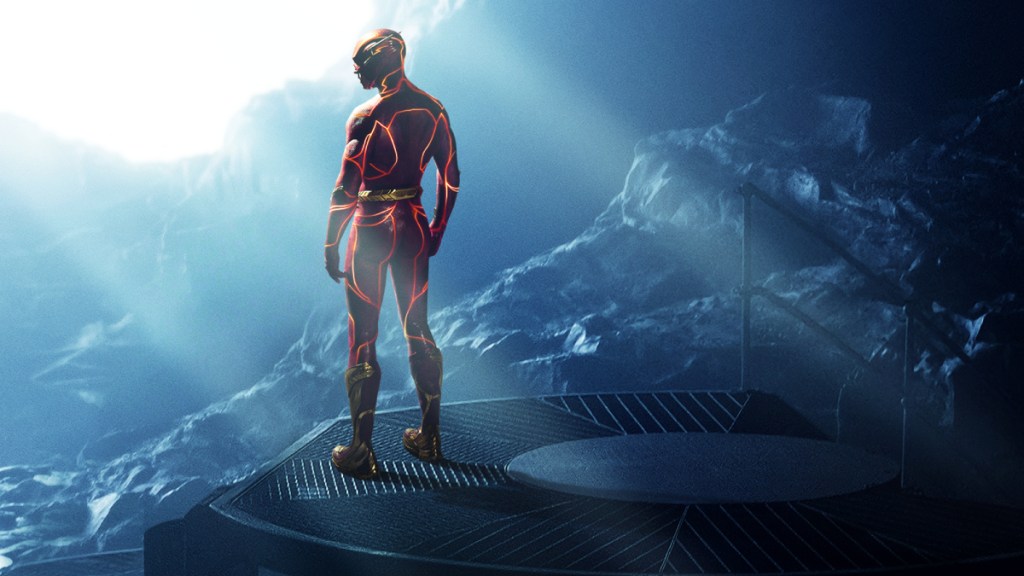After a decade or so in development, and a half-dozen or so criminal allegations against star Ezra Miller, The Flash finally arrives in theaters in a week and a half. The expectation from fans has been that it’ll reboot the DC Universe onscreen and pave the way for James Gunn’s new slate of films. The hype for those fans has mostly been on the return of Michael Keaton as Batman, an ironic much-demanded return considering that comics readers circa 1988 actively protested his casting in the role. None of that much matters, though, if the movie itself isn’t any good. Could horror director Andy Muschietti (It) really be the guy to handle all the hype, and pull off everything DC and Warner Bros. need?
Relax, It Delivers
The box office will be the final arbiter, but quality-wise, the answer is yes. The Flash feels like a unique sort of superhero crowd-pleaser, designed to placate Zack Snyder fans, Tim Burton fans, Marvel movie fans, camp fans, grimdark fans, smart fans who’ve followed every DC movie development — the works, save for those who (understandably) don’t want to support Miller with their dollars. Yet holding it all together is Ezra Miller. It doesn’t take long for the viewer to realize there’s no way Muschietti could reasonably have Kevin Spacey’d this movie and done reshoots with a new actor. This is a superhero buddy comedy in which Miller plays both buddies, and so effortlessly that you’ll never question it. Miller’s dual roles quickly fool your brain into thinking there just must have been two of them on the set, and in a massive, CGI-heavy epic, that’s the best special effect.
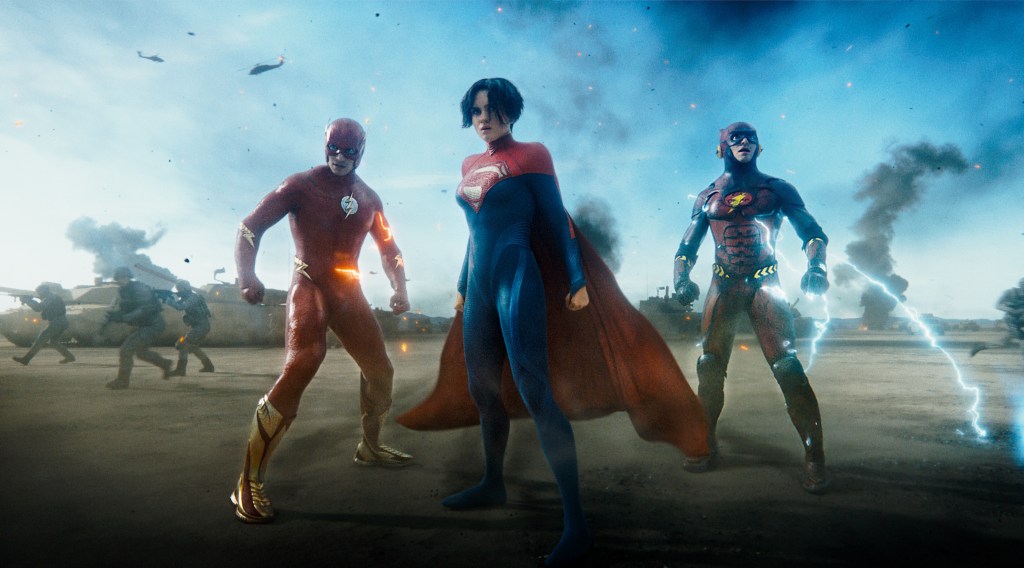
Other special effects in the movie are, frankly, a lot iffier. Anyone who enjoyed making fun of the fake baby in American Sniper will have a ball here during one key action scene. Whenever the Flash enters the interdimensional Speed Force that allows him to go at warp acceleration, he sees visions of the past and future in drastically different levels of resolution, with real humans side by side with uncanny-valley synthespians. Call it a style choice, perhaps, but it feels like an effect Muschietti would touch up further if the budget allowed.
Don’t Expect Gunn-Verse Hints
No major spoilers, but the international marketing, and some of the toys released, have given away more than they ought. Let’s just be clear what isn’t here, and that’s any real hint of what Gunn has planned for future movies. The existence of the multiverse as depicted here simply allows for any possibilities moving forward; it doesn’t commit to any, and the obligatory post-credits scene is unrelated to that.
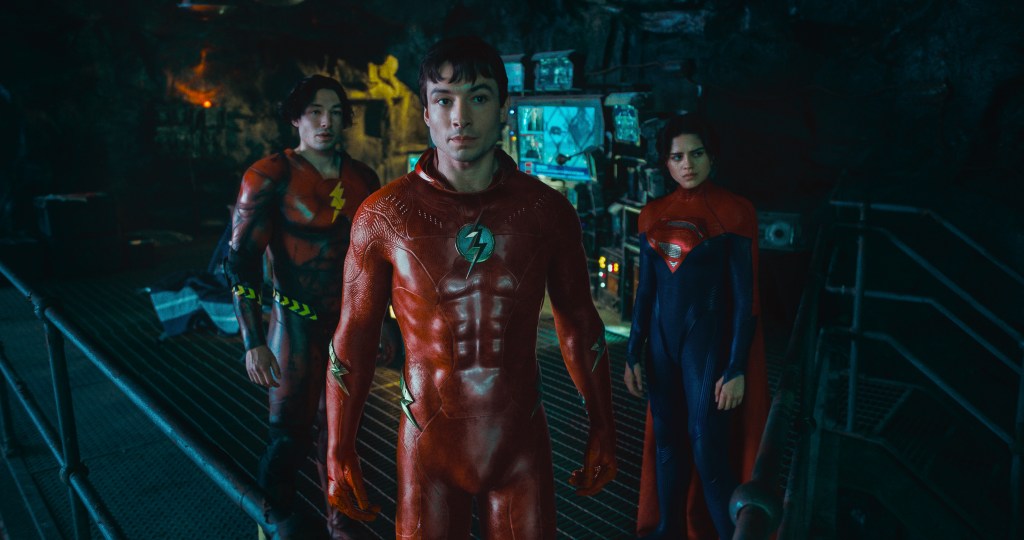
Instead, enjoy The Flash for what it is: an expert mix of tones that has some of the funniest gags and dialogue in any DC movie since the Adam West Batman film, yet takes the aging of Bat Classic (Keaton) and the torture of Supergirl (Sasha Calle) dead seriously. It even throws in the Soviets as bad guys, since this is the multiverse.
Nobody Better Than Ezra
But it’s all on Miller — and Miller alone — to carry the film, and they do. The Snyderverse Barry “The Flash” Allen, upon realizing he can time travel, tries to make one subtle change to his past that might save his mother, but instead he’s booted out of the Speed Force into a changed world, newly powerless, and encounters himself at 18. Older Barry is still twitchy and angsty, but older and wiser, while college Barry is a too-easily amused stoner. When a larger threat emerges, both of them have to figure out how to save the world — and Barry 1’s knowledge of Superman and Batman might be their best hope.
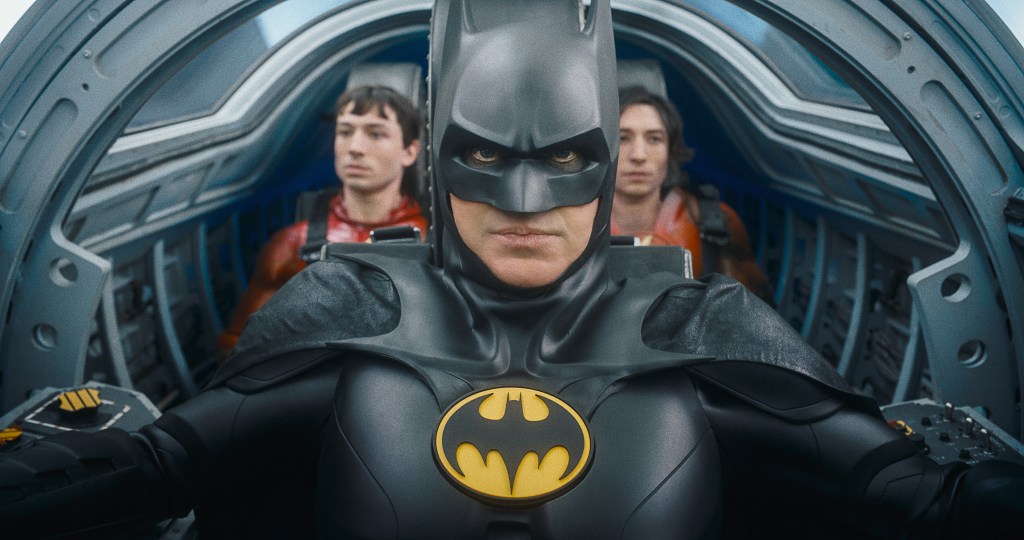
Screenwriter Christina Hodson loves crazy-funny dialogue, which, in Margot Robbie’s mouth, was the highlight of her Birds of Prey screenplay. She has a lot of fun with both Barrys, and Barry 2’s stoner college friends, while also giving Michael Keaton’s Bruce Wayne more personality than either Tim Burton movie did. Those films were infamously more about the scenery-chewing villains; here, despite the return of General Zod (Michael Shannon), who acts like a force of nature and fate, the Barrys are essentially their own primary antagonists. It’s all too easy to make real-life analogies from a safe distance, but just as the real life Miller seemed to run from their problems only to cause more, so does Barry.
Silent, But Deadly Fun?
Miller is so immersed in the roles that it’s not hard to believe they may have gone too method without safeguards. Indeed, if not for all the baggage, there’s a real chance Miller’s performances here could have been in the awards conversation. They’re that good, and utterly essential to the film working. It’s not just about line delivery, either. Miller loves to get involved in the stuntwork and creating a physical language for the Flash, which is very much on display here. A gag involving the difference between the way the Flash runs and real people run is long overdue; a slow-motion rescue that’s like the X-Men movie Quicksilver sequences (but different enough) relies on Miller essentially becoming a silent comedian for a spell. They really can do it all onscreen.
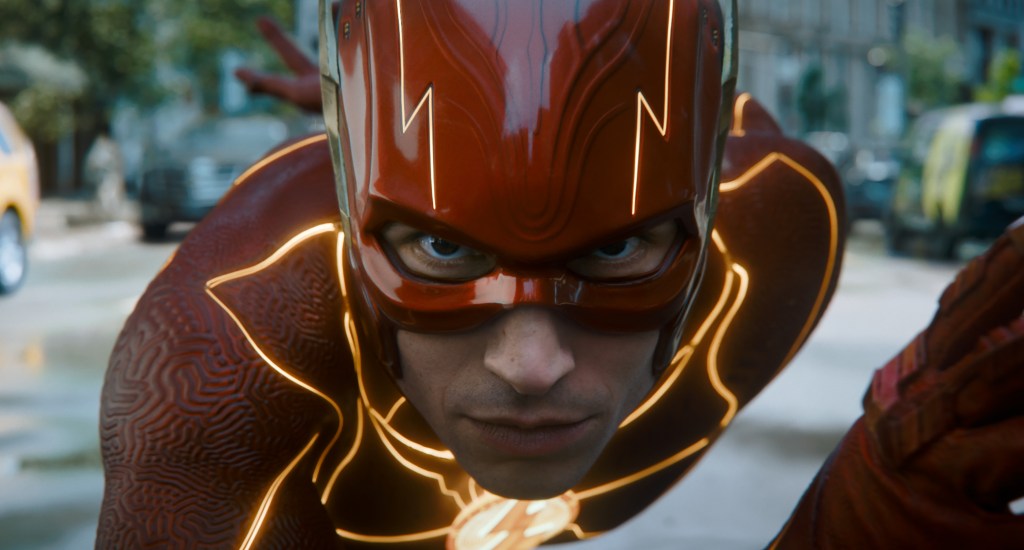
Muschietti’s not generally known for comedy, but some of the stagings here are Looney Tunes worthy, and because they’re Flash-specific super-power scenes, they don’t undercut the seriousness of Batman or anyone else. In one sequence, an escalating chain of consequences makes colorful use of one truck full of musical instruments and another loaded with fireworks; another gleefully launches scalpels and acid at infants and a dog, making Miller practically Roger Rabbit in defense of Baby Herman. As in those toons, it’s the protector who takes all the pratfalls and blows, while the innocent would-be victims remain blissfully unaware.
Bat-Dance
On the other hand, Michael Keaton now has a Batsuit that he and his stuntman can actually move in, allowing Batman ’89 to kick ass like you always wanted to see him do. If this is it for him, it brings about some nice closure. Hell, we know this is it for the Snyderverse, and despite the unrealistic expectations of some, it arguably offers nice closure there too.
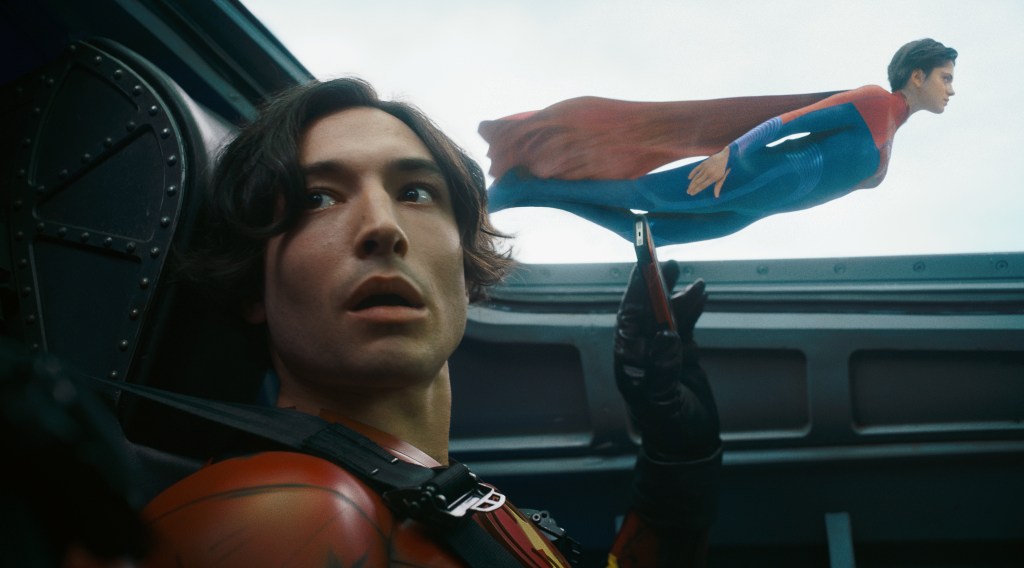
It’s fascinating to compare The Flash with Across the Spider-Verse in their approaches to multiverses and variants. Both rely on the notion of fixed timeline events, and emotional scars as a foundation for heroics. Yet while Spider-Verse maintains a childlike sense of wonder and faith that everything can turn out right, The Flash aims at slightly more mature audience members, who know what it feels like to want to scold their younger self or inner child. And it has the sense to realize that both the older and younger you can be wrong, albeit in different ways.
Verdict:
It’s a minor miracle that we have almost equally epic and impressive treatises on these topics from Marvel and DC in the same month. It’s as if we briefly popped into a different dimension where this could always be the case.
Grade: 4.5/5
The Flash opens in theaters June 16th.
